Specialist Picks: Fashion Photography from the April 27, 2023 Auction
Beyond Fashion: Photography in a Category Overlooked in the Fine Art Lexicon
Though ostensibly fashion photography is simply intended to sell a product or a lifestyle, the category also offers a layered and meaningful perspective on the sensibility of the historical moment in which it was created. A barometer for trends, perspectives, and preferences, fashion imagery can also be, at times, a moving reflection on historical change, a means of pushing the boundaries of culture and norms, or even an avenue for protest and rebellion. Three lots in our upcoming auction are, at face value, iconic works by well-known photographers, but each also offers unexpected insight into a category often overlooked in the fine art lexicon.
Alice Le Campion, Specialist
Peter Hujar’s Portrait of Charles James, Chelsea Hotel, 1977 & Delia Doherty, 1979.
Peter Hujar documented the Bohemian cultural scene in downtown New York in the 1970s and early 80s through deep and introspective black-and-white studio portraits, primarily shot with a twin-lens reflex camera. His early work in fashion and commercial photography most certainly contributed to shaping his vision of a posed composition. However, he rejected this milieu as early as 1967 to focus on his own personal art. While Hujar’s work was intimately intertwined with New York’s queer community, portraying queer performers, artists, and intellectuals at the beginning of the AIDS epidemic, such as drag performer Ethyl Eichelberger or transgender icon and Warhol muse, Candy Darling, his work also documents more broadly the creative subculture scene of that time.
While Charles James is considered as one of the most influential fashion designers, thanks to his innovative and sculptural design process, little is known about Delia Doherty, except that she was a fashion designer who was part of Hujar’s circle and worked with the queer community in the 1970s.
These two compelling portraits taken in 1977 and 1979 reflect Hujar’s talent in capturing the psychological intensity and personal insight of his subjects, thereby contributing to creating intimate portrayals.
Cameryn Kaman, Department Assistant
Horst P. Horst, Mainbocher Corset, Paris, 1939.
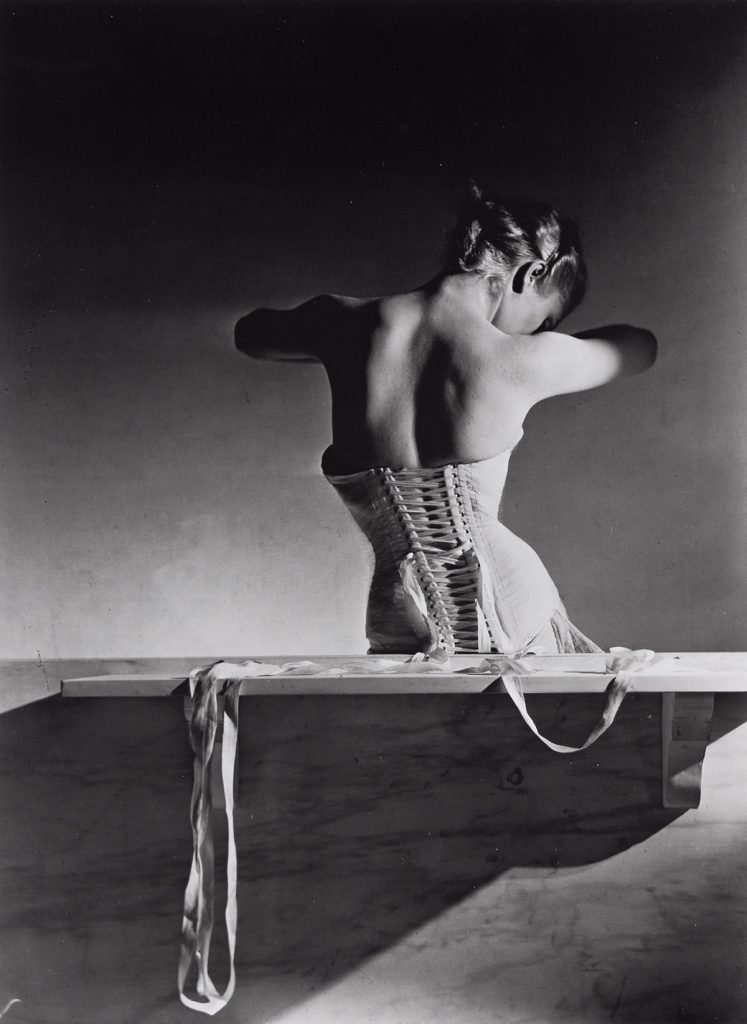
Mainbocher Corset, Paris, By Horst P. Horst is one of the most iconic photos in Horst’s repertoire, and for good reason.
The photo is complex and eye-catching, a perfect example of Horst’s mastery of composition and lighting. This can be seen in the contrast between the stark lines made by the edge she is sitting on and the almost liquid form of the tightening ribbons that pool and fall off the platform. The model’s silhouette is timeless and effortless, letting the eye move easily across the composition while keeping attention to the model’s beautifully sculpted torso, reminiscent of Greek sculpture.
Although the image was originally published in Vogue, the artistry of the photo elevated it beyond advertisement into a cultural touchstone. This can be seen in works such as Madonna’s music video Vogue, directed by David Fincher.
Significantly, this was the last photo taken by Horst in Paris before he fled France for the United States, just prior to the outbreak of World War II. It is easy to see Horst’s emotional state reflected in this photo. The model holds herself carefully, hiding her face in an almost melancholic pose. The image is full of tension and waiting. Horst said of the photo, “This photograph is peculiar—for me, it is the essence of that moment. While I was taking it, I was thinking of all that I was leaving behind” (Brown, Horst: Photographer of Style, p. 76).
The context behind the image deepens its meaning. Horst did not shy away from the historical significance of the moment he was in, allowing the uncertainty and fear he was feeling to guide this piece. It provides a wonderful example of fashion photography going beyond what it is commercially intended for and instead mirroring the realities of life and death while still holding on to beauty.
Deborah Rogal, Director
Richard Avedon, Avedon: Photographs 1947-1977, 1978.
Perhaps more than any other twentieth-century practitioner, Richard Avedon’s fashion photography and portraiture defined our sense of beauty, culture, and style. Expressive and intimate, Avedon’s editorial imagery was compositionally precise and visually dynamic, known for both animated movement and narrative content. Avedon considered himself first and foremost a portrait photographer, and indeed his fashion work seems to capture the fundamental essence of his models, an unmatched element that speaks to his abilities to communicate with his subjects. Avedon featured his models in settings that were both everyday and dramatic, effortlessly translating the need for fashion to be both aspirational and relatable.
Avedon’s most famous work titled Dovima with Elephants positioned his model wearing couture Dior between two restless circus animals, her presence both a stark contrast heightening the narrative tension of the image, and a balm to their powerful energy. No detail, from her fingers to toes, seems out of place. It remains one of the most iconic images ever made, bringing fashion photography from the studio to the street.
In 1979, the Metropolitan Museum of Art held a retrospective of Avedon’s work, and published what is now considered a collectible title Avedon: Photographs 1947-1977. The example seen here is a rare and personal copy of the title that features four pieces of ephemera taped in, all from Avedon to Dovima. This includes a color photograph of Dovima at the Met’s exhibition posing in front of their iconic collaboration dated “NYC 1979,” a card signed to Dovima, and a typed letter signed on his letterhead from Avedon “Dearest Dovima,/Some people have it and some people can’t give it/away and you’ve got it./Still and always.” The last page of the collaged ephemera features silver print of Avedon and Dovima inscribed “Avedon Exhibit at Metropolitan Museum of Art NYC 1979.”
As is evident in the inscriptions and notes from the photographer, the relationship between the two was inspired and mutually respectful. Avedon said of Dovima, “She was the last of the elegant, aristocratic beauties,” calling her “the most remarkable and unconventional beauty of her time.” Dovima recalled, “We became like mental Siamese twins, with me knowing what he wanted before he explained it. He asked me to do extraordinary things, but I always knew I was going to be part of a great picture.”
Bridget Fay, Cataloguer
Helmut Newton, Rue Aubriot, Yves St. Laurent, Haute Couture Colletion Paris, 1975.
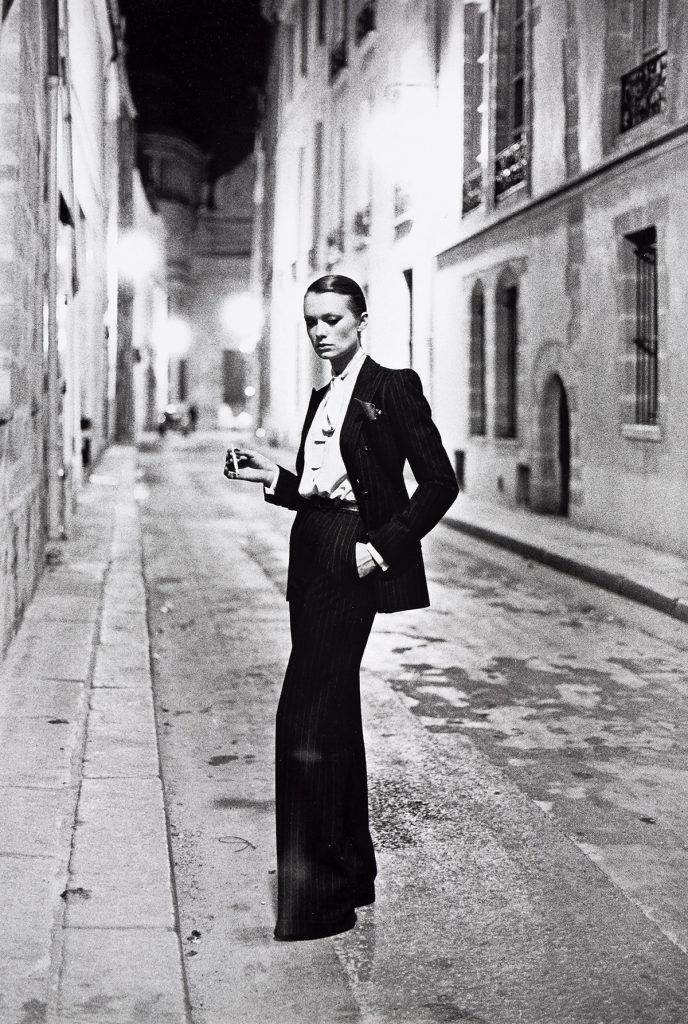
Androgyny is no stranger to the world of fashion photography in modern times. The blend of masculine and feminine features and styles in high fashion and everyday fashion is common and, in many ways, expected. In the 70s not so much. It was something you only really saw with a select few musicians such as Bowie or Freddie Mercury, not in the pages of Vogue. At least not before Helmut Newton.
One frame of a triptych which is rarely seen together, this work is the first image in an overall provocative, sexually charged, and slightly mysterious story. In the second and third images, a nude woman dressed only in heels and a veiled hat joins our androgynously dressed woman before they meet in a kiss in the final image. Throughout the series, the dressed figure maintains a strong almost noble stance in her Yves St. Laurent smoking tuxedo, playing with the ideas of gender identity alongside a nude much softer counterpart. Mirroring the second-wave feminist movement taking place at the same time, through here through the lens of a man’s eye, Newton uses the medium of fashion to play with the ideas of gender and sexuality, challenging what was expected of women and fashion at the time.
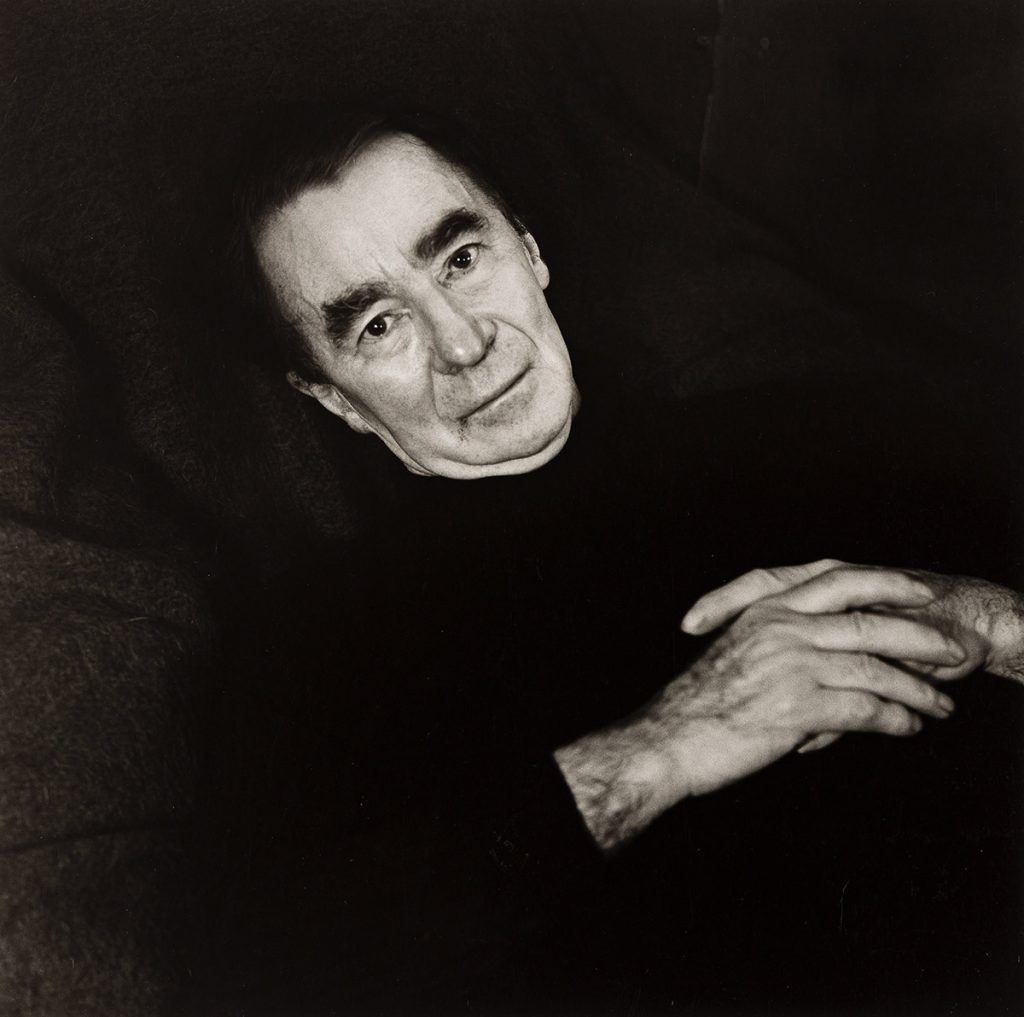
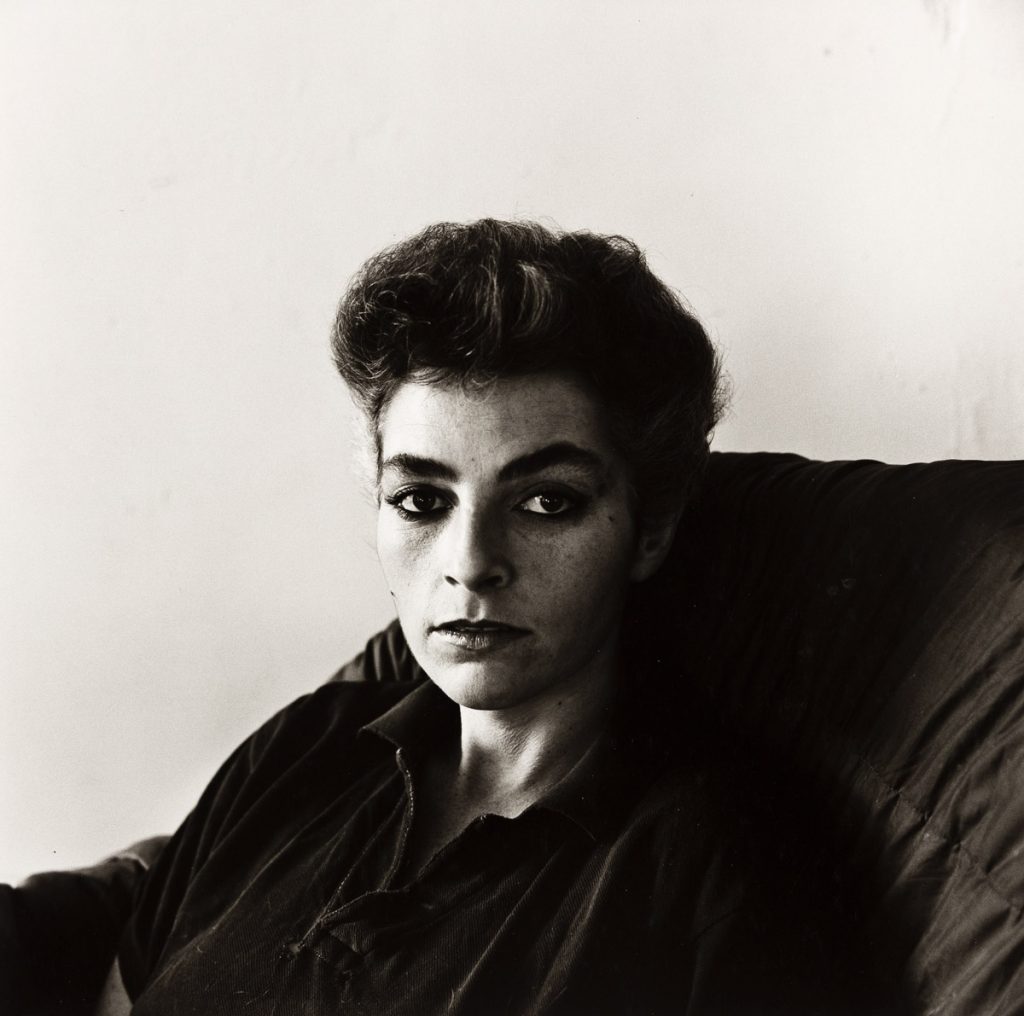
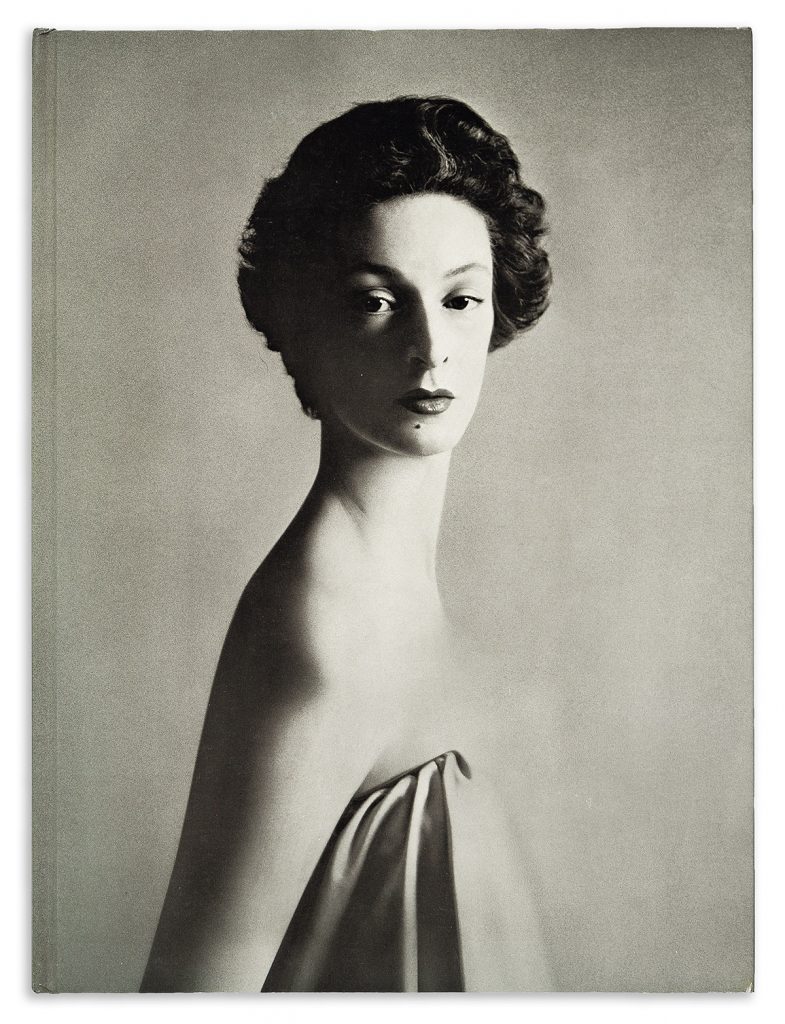
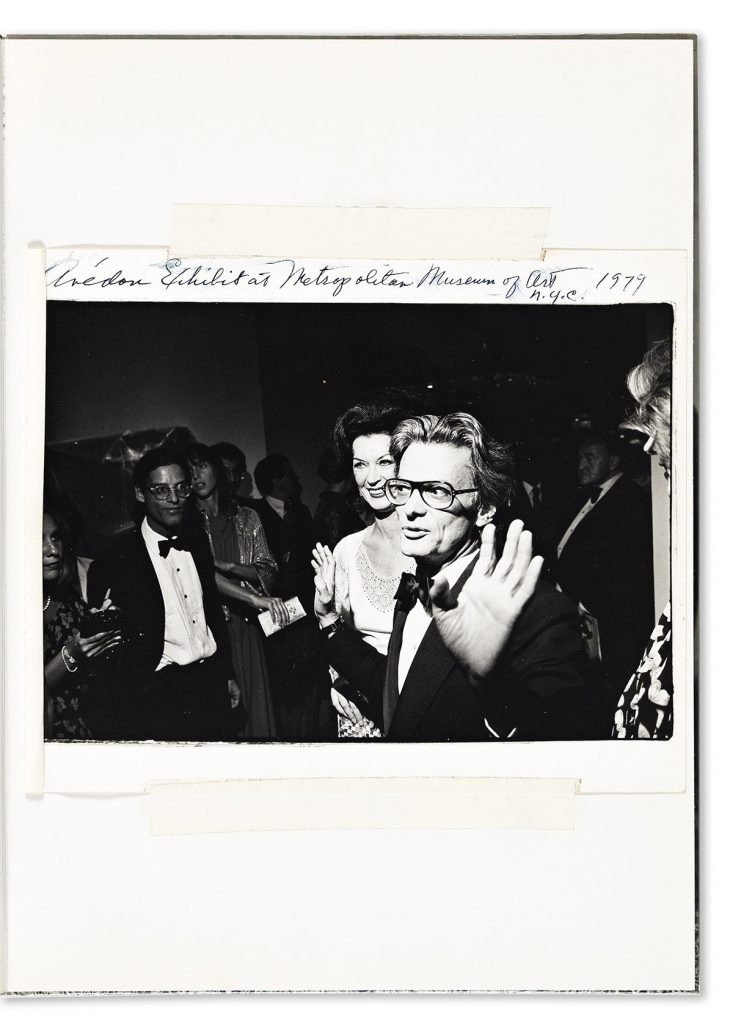
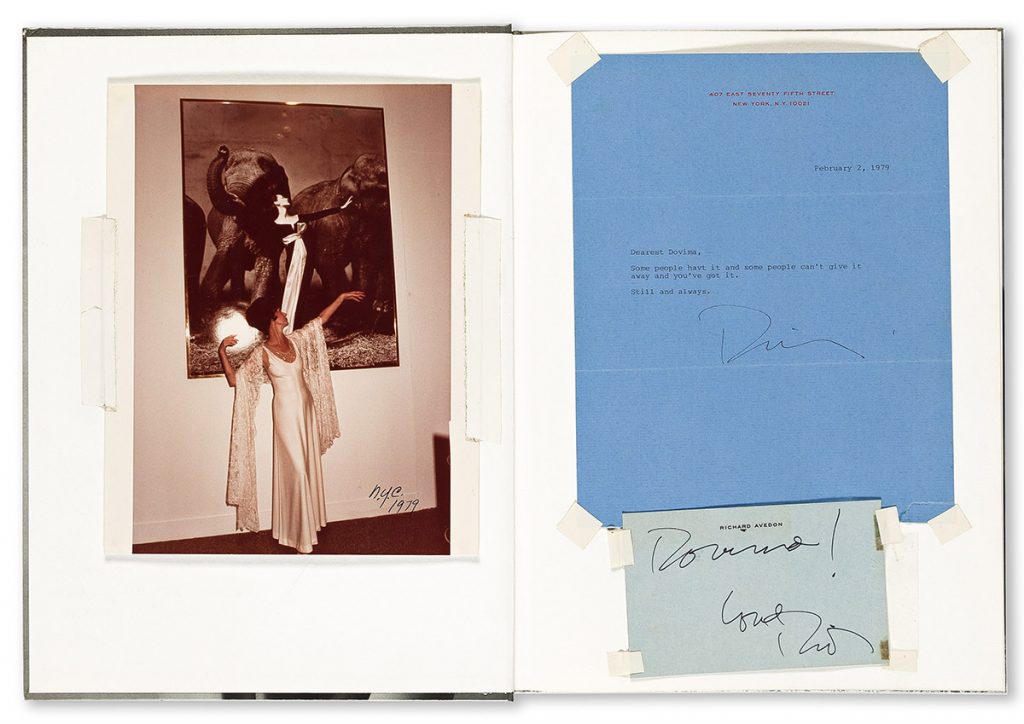
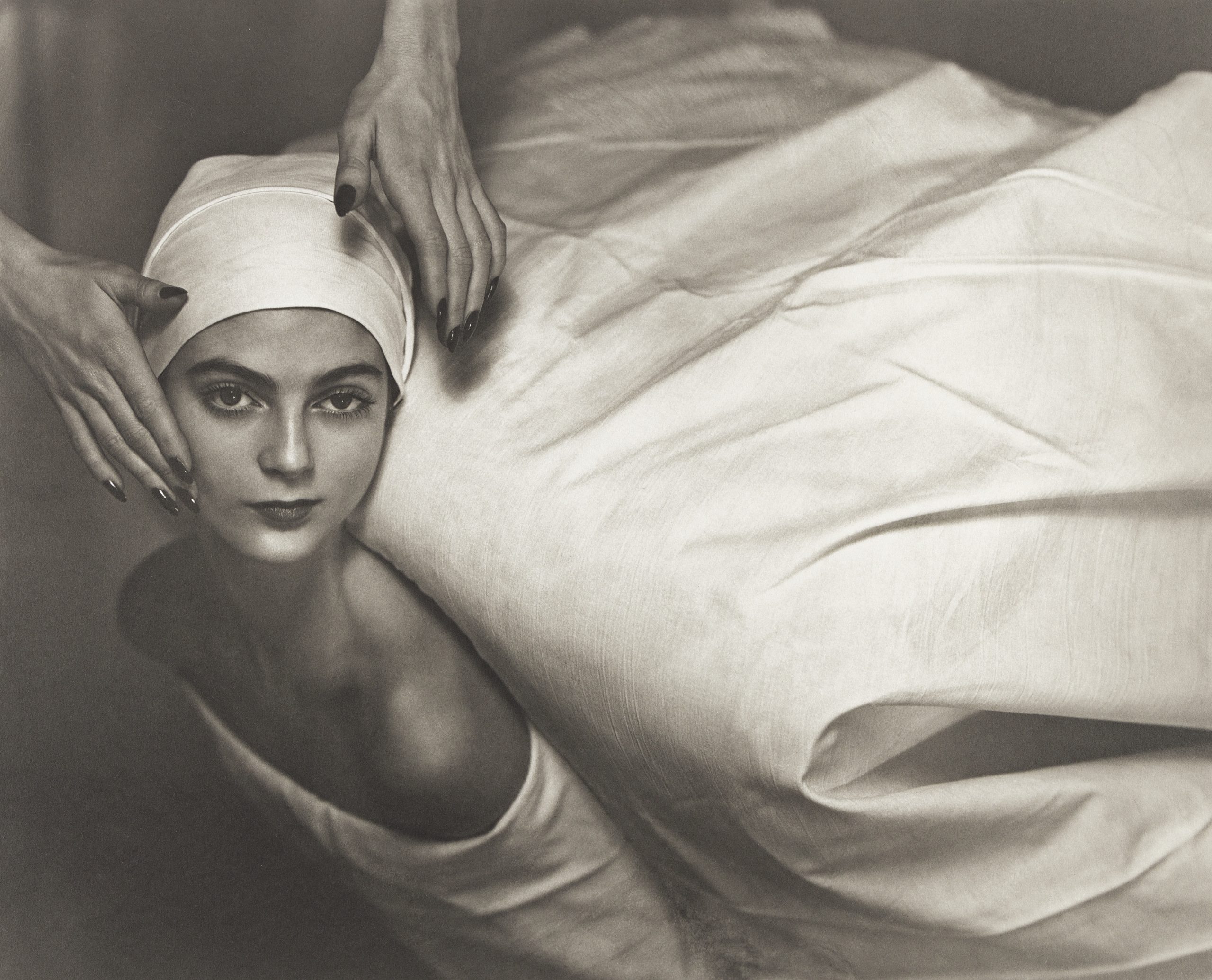
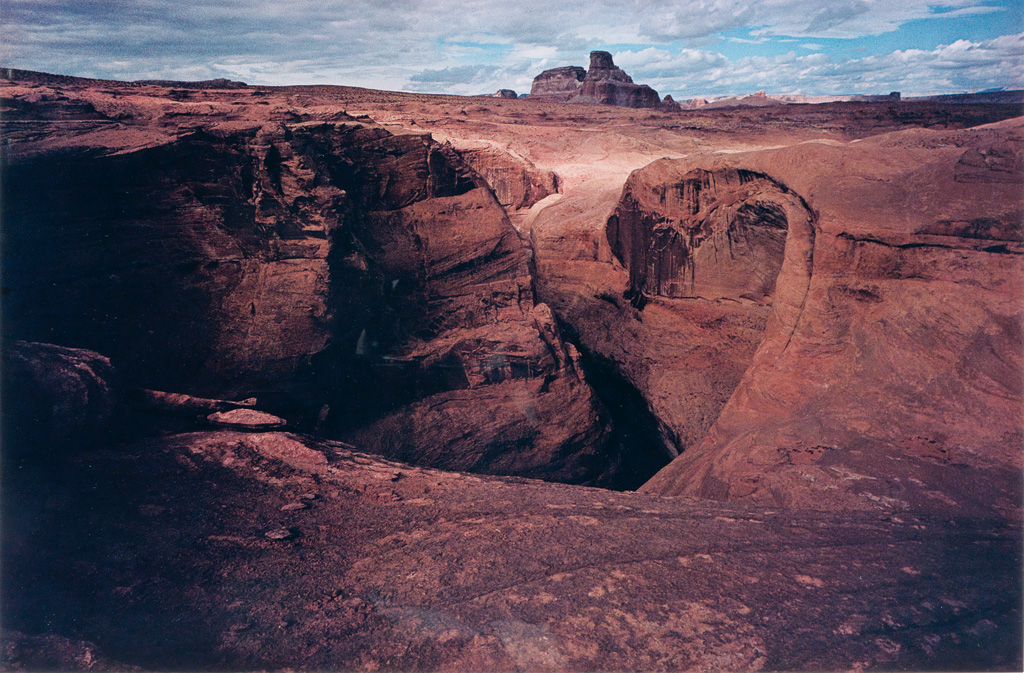
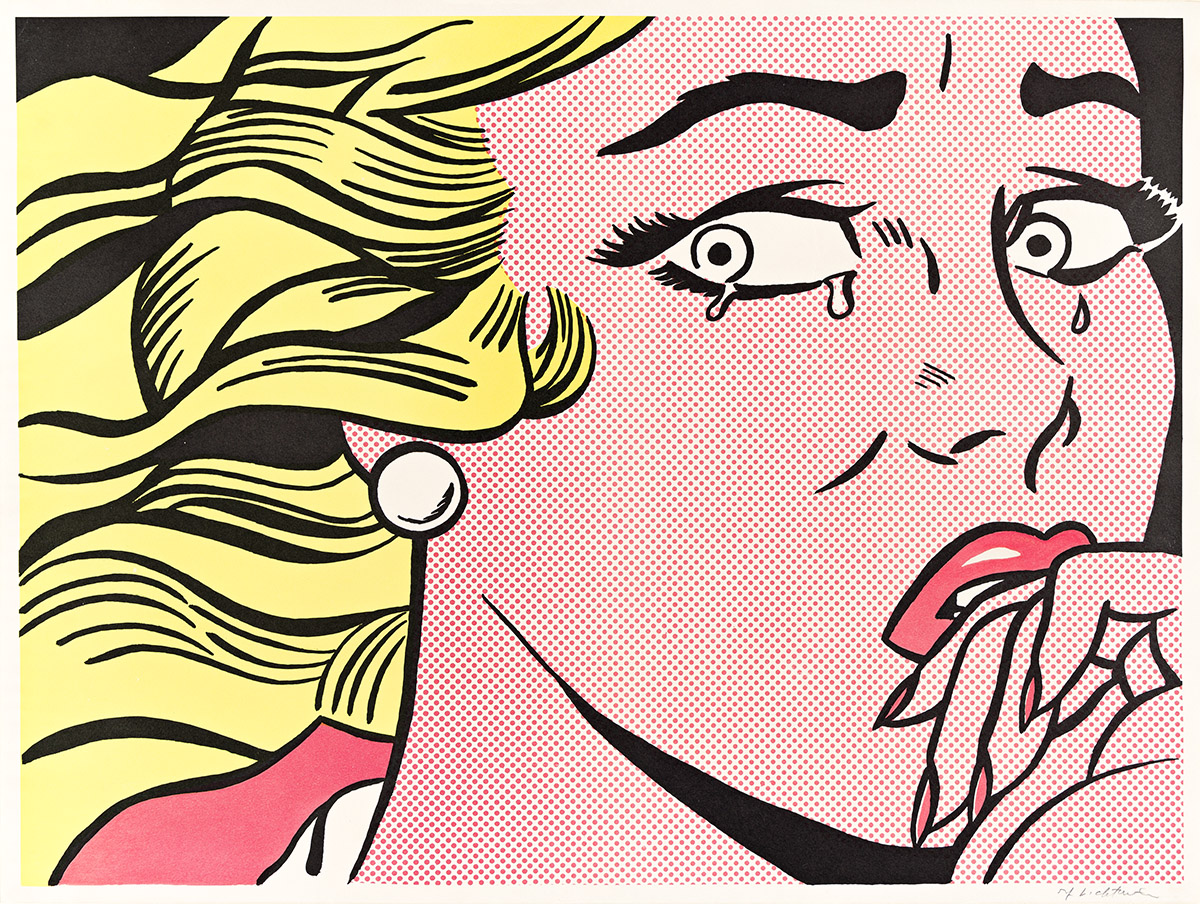








![Grace Meschery-McCormack shares about two copies of Fernando de Rojas’s ‘La Célestine,’ including a limited edition copy illustrated by Pablo Picasso.
At auction April 22. Learn more about the works at the link in our bio.
#Rarebooks #rarebookdealer #antiquarianbooks #auctions
_______________________________________
Music Credit:
Schubert - Piano Quintet in A major ‘The Trout’, D. 667 - IV. Andantino – Allegretto
Music provided by Classical Music Copyright Free on Youtube [https://tinyurl.com/visit-cmcf]
Watch: • Schubert - Piano Quintet in A major ‘...]](https://scontent-iad3-1.cdninstagram.com/v/t51.75761-15/491443494_18499096345036585_5935932878956098058_n.jpg?stp=dst-jpg_e35_tt6&_nc_cat=107&ccb=1-7&_nc_sid=18de74&_nc_ohc=PkkgV2ztsQIQ7kNvwEDCz0Y&_nc_oc=Adl3b2Joa3oMYe0KOe2BxPzZCRTEJIkNg76WoIsk3T2zNdnQ9wTCP8aaOTLCx9PcHBA&_nc_zt=23&_nc_ht=scontent-iad3-1.cdninstagram.com&edm=AM6HXa8EAAAA&_nc_gid=cHQh85iFuXKnoosa52OUcQ&oh=00_AfH_bviwrrCDn-1IF3WAmIuh4FYN9DLSOUYQAHjsU3P8ew&oe=6812FDD1)






